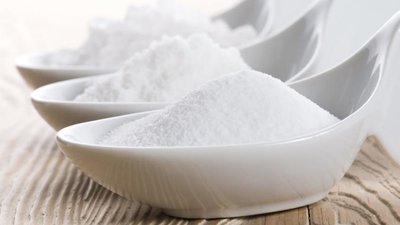For decades, people have been told to limit the amount of salt in their diets. In fact, high sodium intake has been linked to everything from high blood pressure, strokes, cardiovascular disease, kidney disease, and osteoporosis.[1]
But if your doctor has never told you to watch your sodium intake, you don't have a history of high blood pressure or other health complications, and you exercise frequently, it might be time to add more salt to your diet.
You don't want to go overboard. But you might be doing yourself a favor by adding more salt to your meals and by having the occasional salty treat. Here's why.
1. Sodium Increases Blood Volume
By making sodium a part of your pre-workout meal or sipping a pre-workout supplement that contains salt, you can help your body create the extra boost in blood volume you need to finish your workout strong.

Blood volume is composed of red blood cells and blood plasma, both of which help move amino acids, glucose, hormones, and other nutrients throughout your body. By increasing your blood volume, sodium helps speed the delivery of these nutrients to your working muscles.
A study conducted at the University of Otago, New Zealand found that athletes who drank a high-sodium beverage before running were able to run longer than those who drank a low-sodium beverage.[2] They retained fluids better too, which reduced the physiological strain on their bodies and kept their core body temperature lower.
2. Sodium Increases Nutrient Delivery
Your body needs glucose, fatty acids, amino acids, water, and electrolytes to maximize exercise performance. But for these nutrients to work, they have to be able to enter your muscle cells. Sodium to the rescue again, acting as a "co-transporter" to help nutrients pass through cell walls.
3. Sodium Stimulates Thirst
Simply by making you thirsty, salt prompts you to take in more fluids, and that has lots of exercise-related benefits. First, staying hydrated helps your kidneys maintain proper electrolyte levels. Hydration also helps maintain blood volume while you exercise. And it reduces the chances that you'll lose strength, power, or endurance—or suffer from the fatigue, headaches, dizziness, and muscle cramps caused by dehydration.

How Much Sodium Is Enough?
For hardcore nutrient-counters out there, the 2015-2020 Dietary Guidelines for Americans suggests that a healthy diet should include less than 2,300 milligrams of sodium per day.
Sometimes, however, it's hard to calculate how much salt your diet contains. Make sure to include the sodium you get from salty foods such as canned beans and vegetables, soup, pretzels, popcorn, chips, and whole-grain crackers. Otherwise, you'll probably underestimate your total.
One of the best ways to see if you're getting enough sodium is by looking at the color of your urine. If there's no color in your urine and it looks like water, you're probably drinking too much water and need to get more sodium in your diet. If your urine is dark like apple cider, it means you're dehydrated and need to start drinking more fluids. The color you want is a pale or lemonade shade of yellow, which means you're well-hydrated and getting enough sodium.
Clear urine could be a sign you're suffering from hyponatremia. Hyponatremia occurs when the sodium levels in your body are too low, because you either have a pre-existing medical condition or haven't been drinking enough fluids that contain sodium and other electrolytes like potassium.
Symptoms of hyponatremia can include nausea, headaches, fatigue, and muscle cramps, and in severe cases can lead to seizures and coma.
References
- American Heart Association. (2016). Sodium and Your Health. Retrieved from https://sodiumbreakup.heart.org/sodiumandyour_health
- Sims, Stacy., Vliet, Linda., Cotter, James., Rehrer, Nancy, (2007). Sodium Loading Aids Fluid Balance and Reduces Physiological Strain of Trained Men Exercising in the Heat. Official Journal of the American College of Sports Medicine. 123-130.

